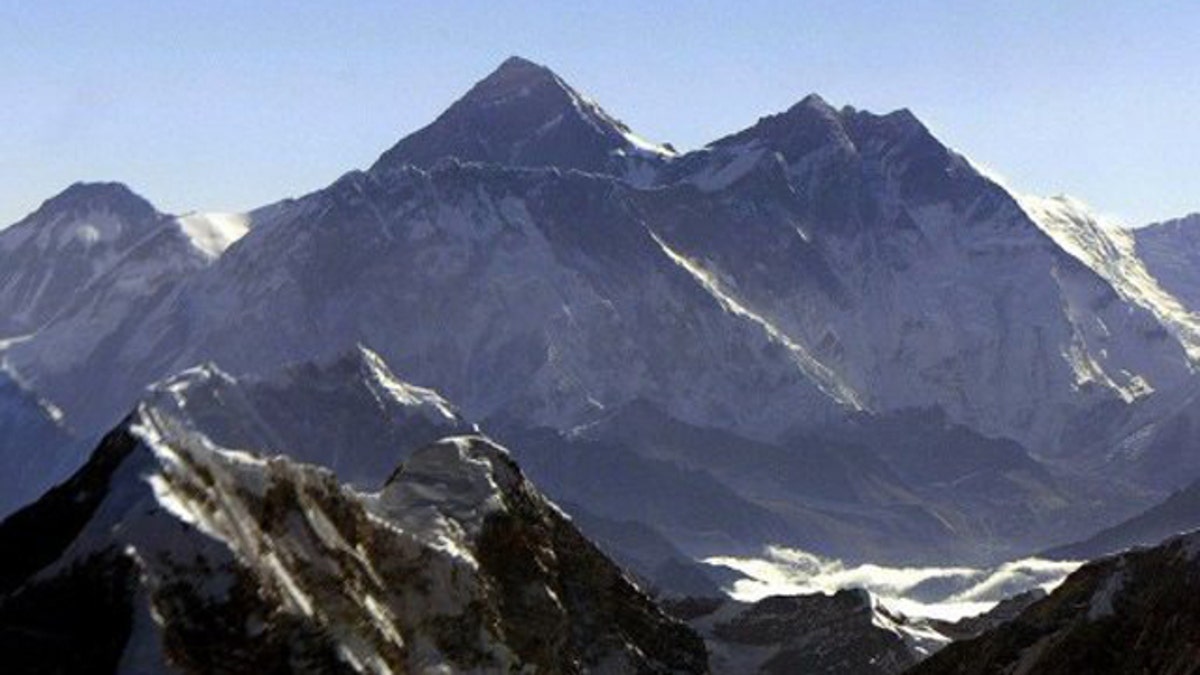
Mount Everest is believed to stand at the height of 8,848 meters (29,029 feet). (AFP)
Mountaineers heading to the summit of Everest might have an unexpected luxury in the future, if the environmental activist group Eco Himal gets their way.
The organization has made a recommendation to the government of Nepal that they install toilets on the mountain as a way of helping keep the environment clean and limiting the impact that humans have on the Himalayan peak.
The recommendation, which will be part of a much larger plan to save the natural environment around Everest, is in its earliest planning stages, and would have some technical hurdles to overcome.
For example, critics of the idea have said that due to shifting ice and snow, it would be difficult to build permanent structures to house public toilets on the mountain.
Proponents of the plan say that they are trying to undo nearly 60 years of damage to Everest, and that the toilets would go a long way in succeeding in that effort.
At 29,029 feet in height, Everest is the highest mountain in the world. It was first climbed in 1953 by Sir Edmund Hillary and his Sherpa guide Tenzing Norgay, and since that time, the mountain has continued to hold sway over the public's attention.
Over the past 10 or 15 years, commercial climbs have increased greatly in popularity, and the summit, which once seemed well out of reach for the common man, now sees in excess of 500 visitors a year.
Those visitors bring a lot of trash along with them, and until recently most of it was left behind after the climbing season ends. Changes to permits that grant access to the Khumbu Region now require teams to remove all items that they bring with them, including trash and human waste, when they depart the mountain. Environmental concerns aside, I know a few climbers who would certainly appreciate a more formal toilet while on Everest.
While some of the larger commercial operations do bring a toilet tent with them, smaller – less expensive – guides may simply tell you to do your business behind the rocks.
Considering the average Everest climb takes in the neighborhood of 2 months to complete, you can imagine how bad that situation could become.